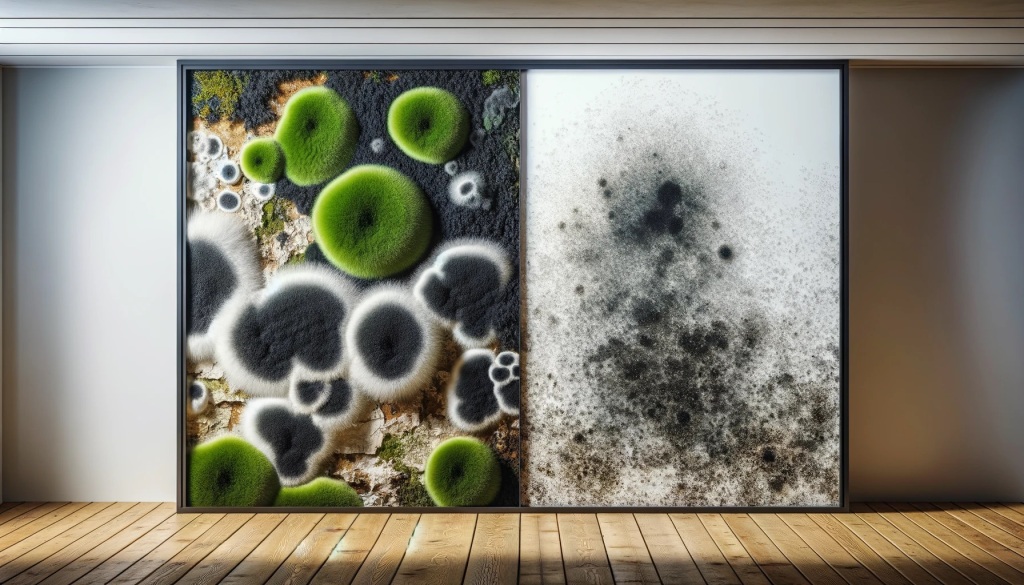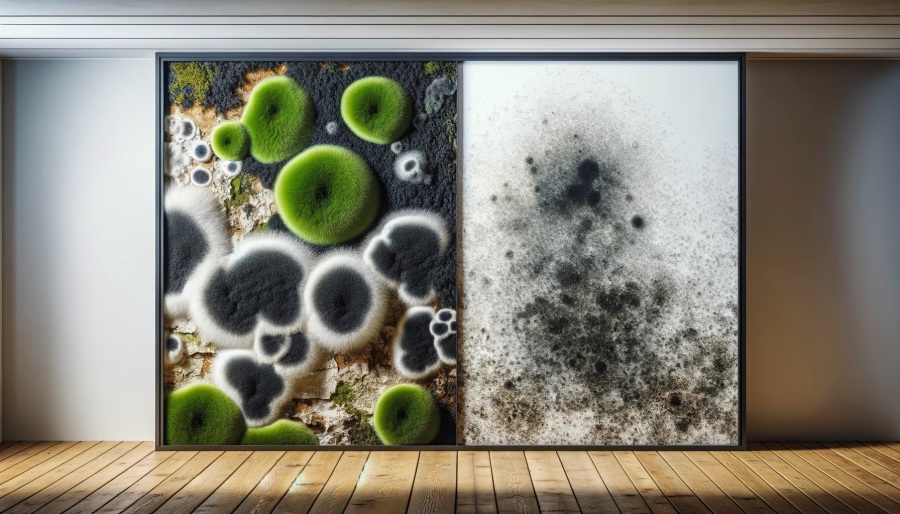Mold and mildew are both types of fungi, but they differ in their appearance, locations where they grow, and the way they affect surfaces.

- Appearance: Mold is usually thicker and can appear fuzzy or slimy, with colors ranging from black to green, blue, red, and white. Mildew, on the other hand, tends to be flat and powdery, and it is typically white, gray, or yellow.
- Location: Mold tends to grow on organic materials like wood, ceiling tiles, wallpaper, insulation, and food. It prefers environments that are damp and can infiltrate deep into the material it lives on, causing more structural damage. Mildew usually grows on flat surfaces like shower walls and windowsills, and it primarily affects plants and damp surfaces in bathrooms, kitchens, and basements.
- Impact: Mold can cause significant damage to structures by breaking down the materials it grows on, which can lead to structural integrity issues in buildings. Mildew, while less destructive than mold, can still cause damage to surfaces and has a less aggressive effect on the material it grows on.
Both mold and mildew can have health implications, especially for people with allergies, respiratory issues, or compromised immune systems, although mold is generally considered more dangerous to health due to its ability to produce mycotoxins.
